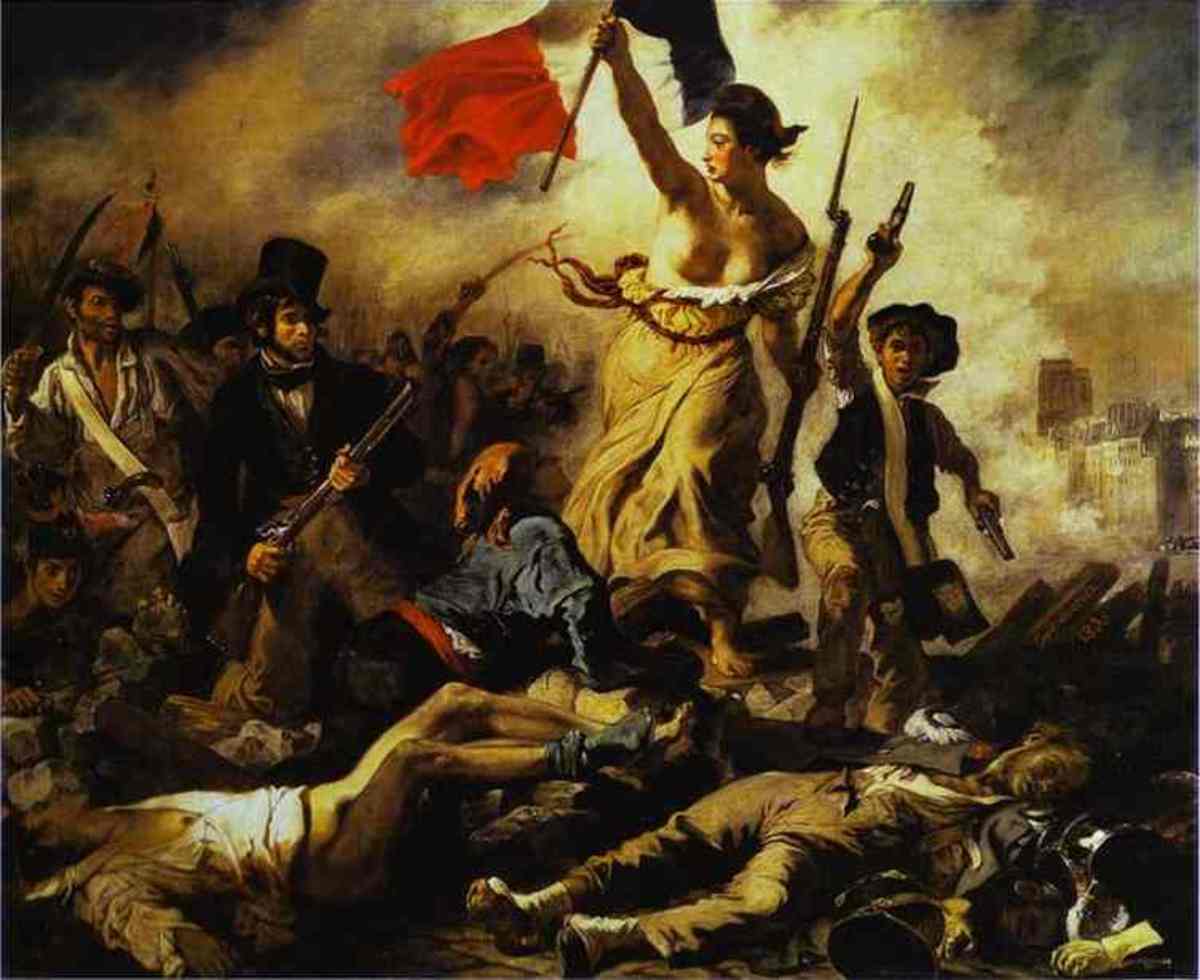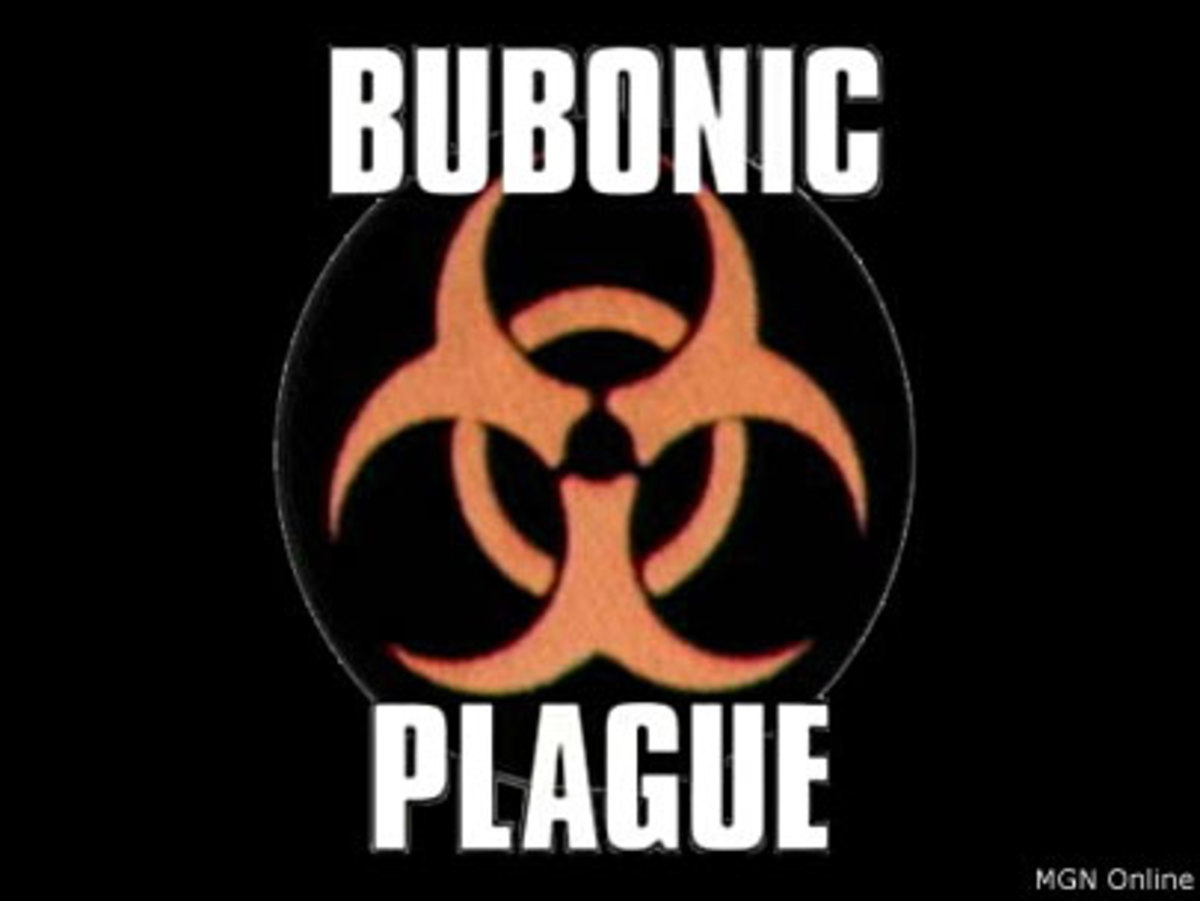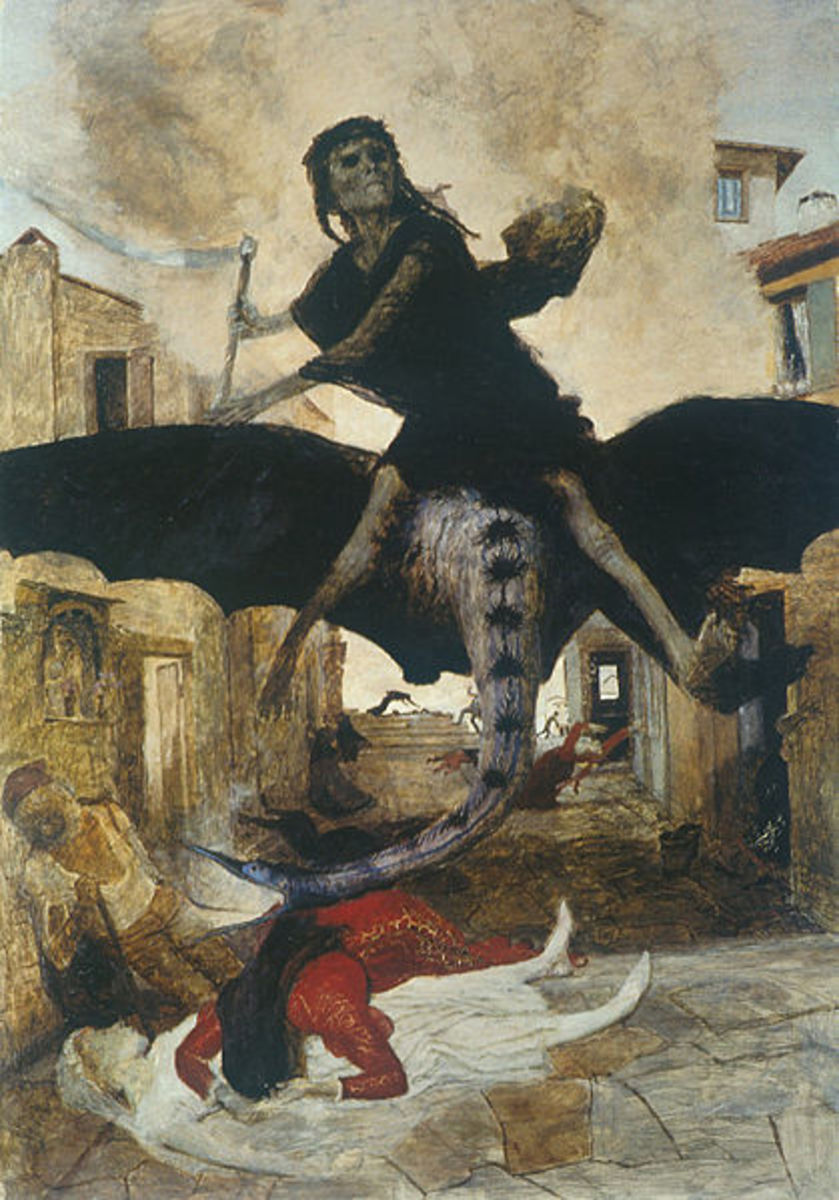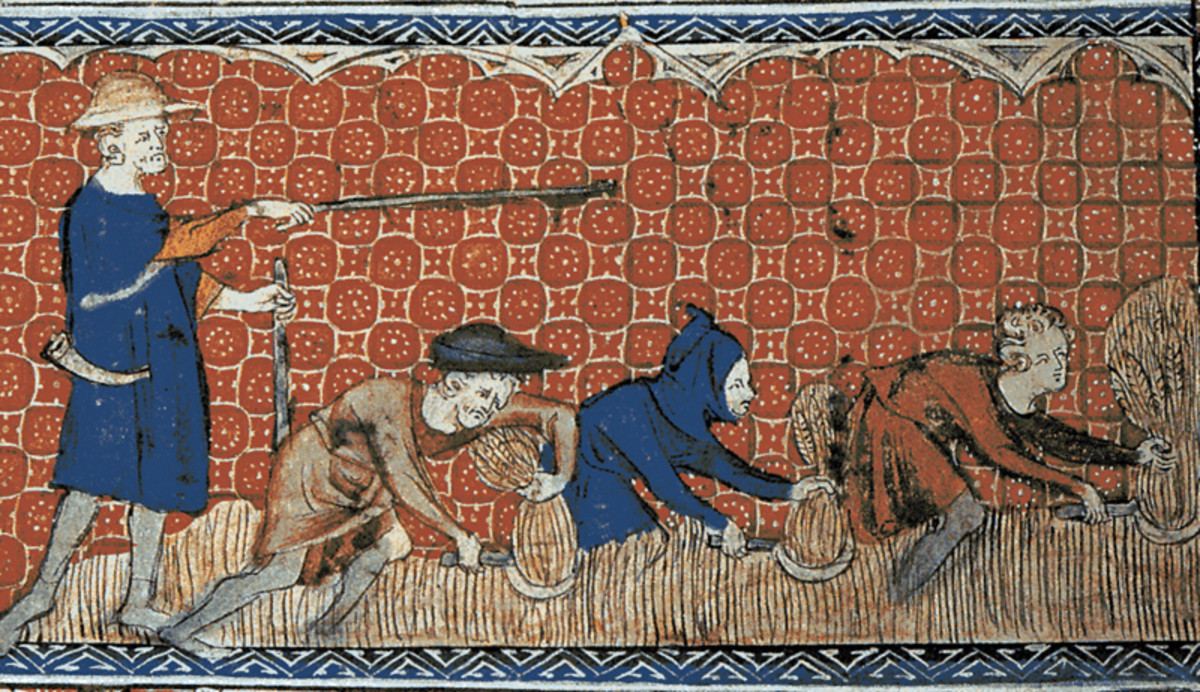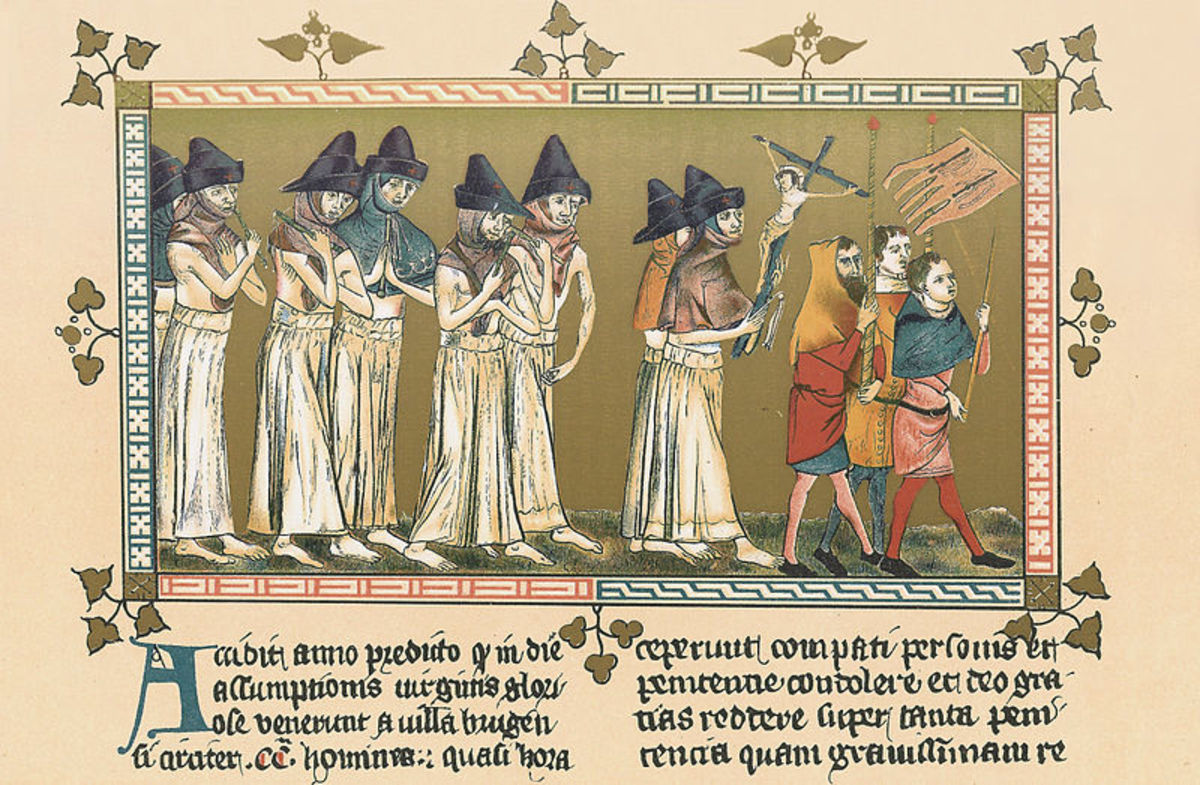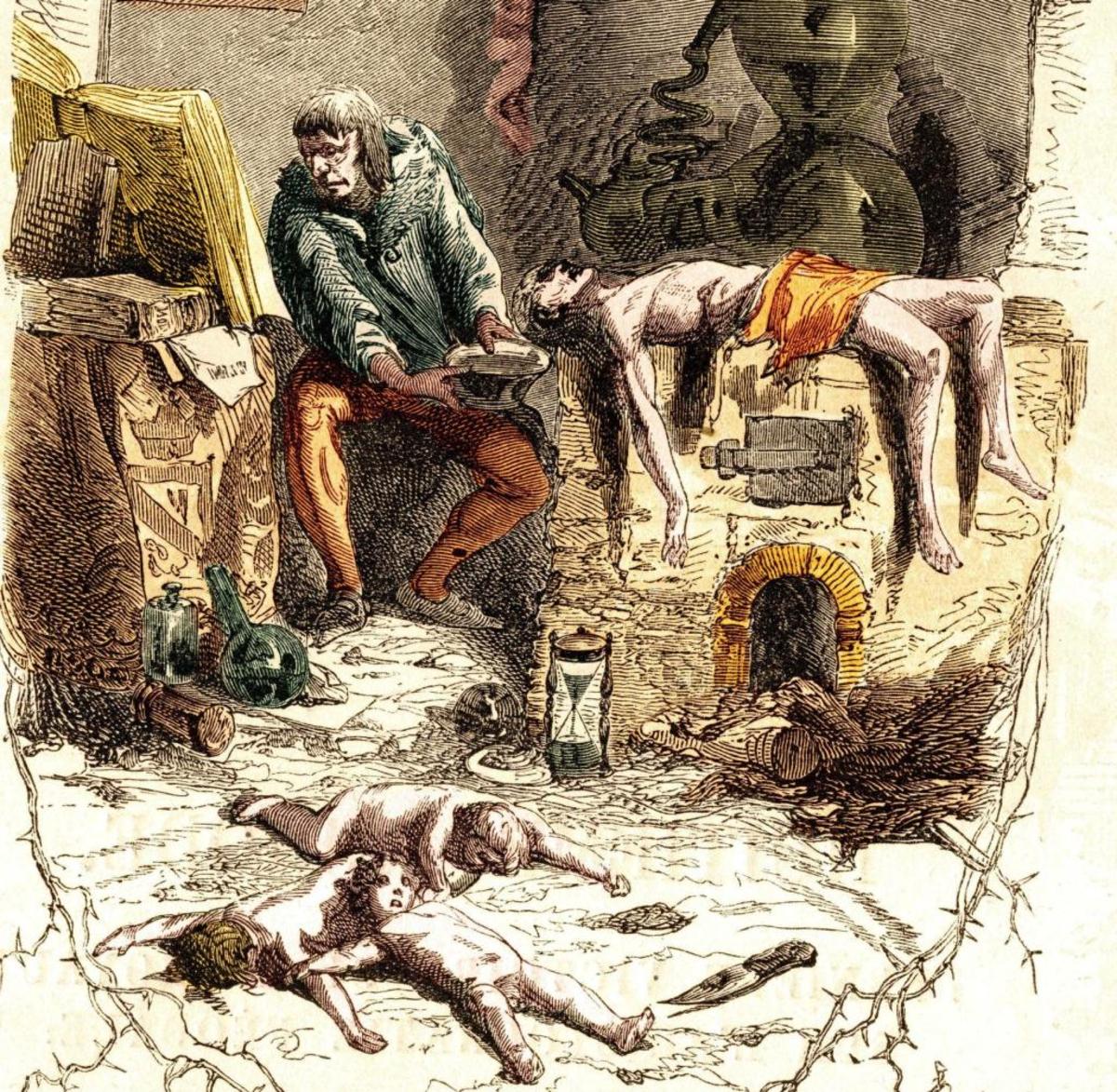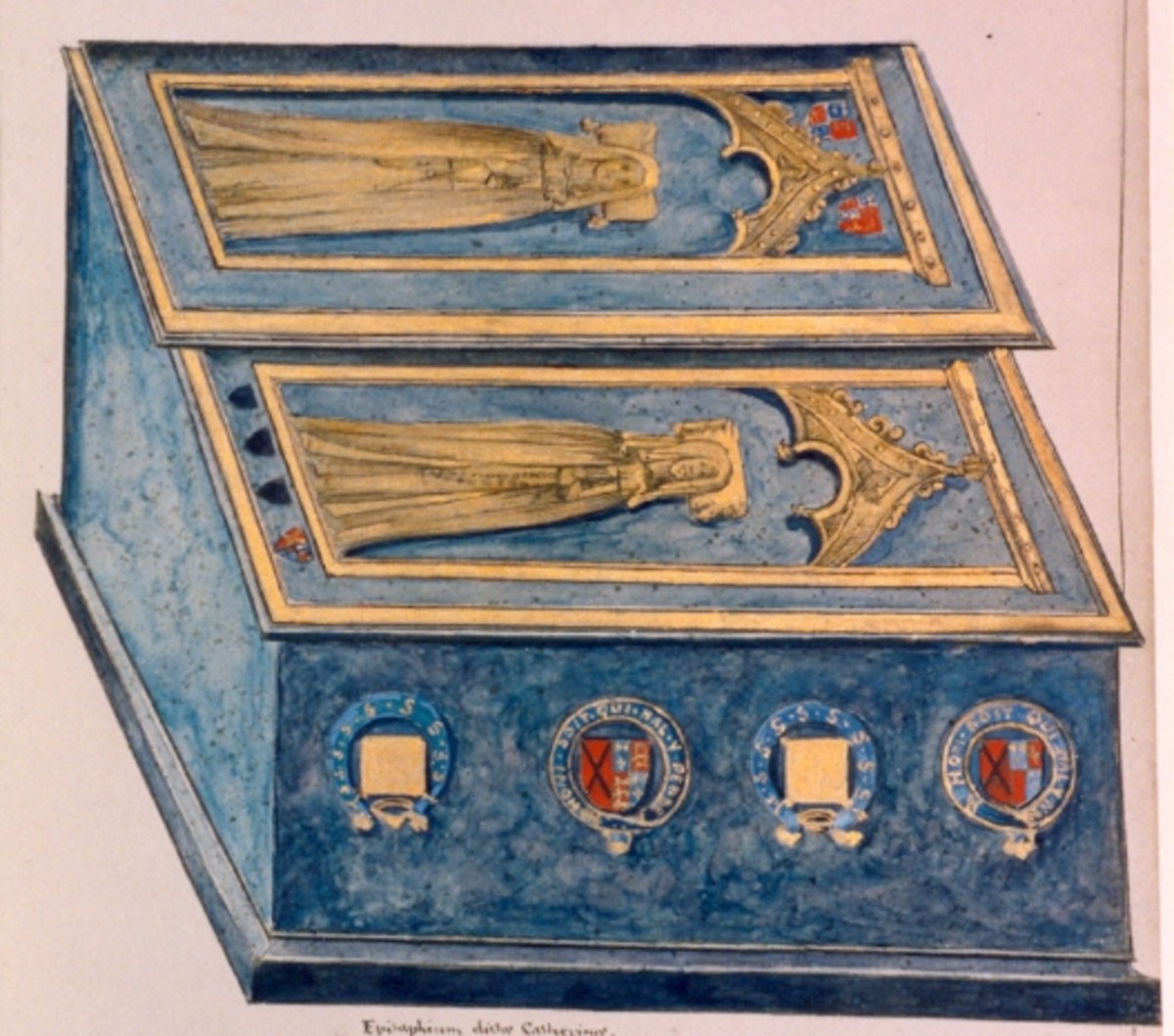A History of The Black Death: Tragedies, Bizarre Treatments & Fantastical Causes
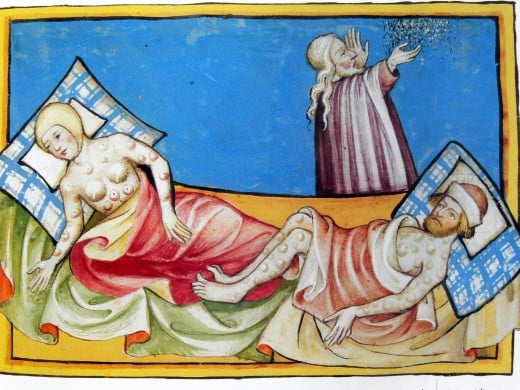
Is history an important area of study?
'Europe' Didn't Exist in Medieval Times
Although today we organise many countries into the area of 'Europe', such a concept had not yet been formed in medieval times.
One must be conscious of this fact in order to understand the context of the time; 'Europe' would have been a foreign concept to people living at the time of the Black Death, and notions of countries and patriotism would not be nearly as prevalent and intrinsic to society as they are today.
Thus, when I refer to 'Europe' in this article, know that I do so tentatively. Similarly, keep in mind that countries like 'France' and 'England' in the 14th century were not the same lands as they are today. Instead, a complicated organisation of allegiances united people, rather than the borders of their land.
I implore you to keep in mind the limitations of using such contemporary constructs as these to describe historical events so far in the past.
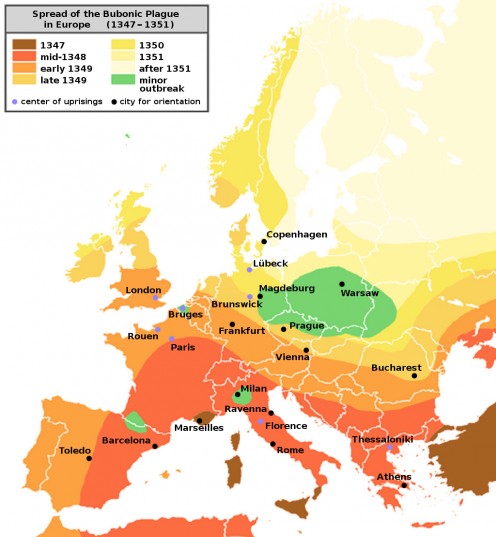
The Arrival of The Black Death in Europe
In October, 1347, a fleet of Italian ships owned by merchants of Genoa entered the harbor of Messina in Sicily. This event marked the arrival of a disease that would then proliferate through lands which together make up modern Europe, and which instilled intense fear and suffering; The Black Death.
Michele da Piazza, supposedly present during the arrival of the Genoese in Sicily, wrote that “…if anyone so much as spoke with one of them he was infected with the deadly illness and could not avoid death”. He states that “Not just one person in a house died, but the whole household, down to the cats and the livestock”.
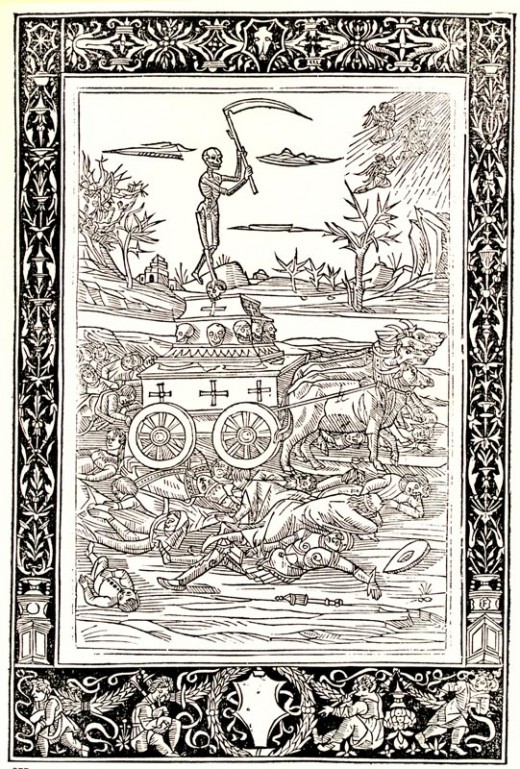
Although exact records of fatalities are difficult to come by, it is likely that at least one third of the populations of Europe had died by 1420, though different estimates of mortality suggest 30-50%, with an estimated 25 million people dead overall, and as many as 25% of villages essentially totally depopulated. “They died by the hundreds day and night” writes Agnolo di Tura in Siena (source), echoing these accounts of unsurmountable death.
This immense devastation instilled great fear and panic, and thus many theories were developed to find the cause of the plague and attempt to find it's cure as quickly as possible. Unfortunately, knowledge of disease and medicine was limited, and the efforts of physicians proved largely ineffective.
Theories as to the plague's causation ranged from astrollogically based theories such as the cosmic alignment of planets and the imbalance of the humours, corruption of the air, earthquakes, the action of the socially shunned such as Jews and lepers, and most pervasively; the wrath of God.
God's Wrath and the Apocalypse
It is important to note that during the 14th century, Catholicism was very much the dominant religion in Europe, and smaller factions of other religions were demonized. Religion tended to be more integral in everyday life, too; thus it is unsurprising, then, that such a significant event as the Black Death was attributed to the action of the Catholic God.
An astrologer attempting to explain the cause of the Black Death cites Ptolemy in chapter 4 of the third book of his Quadripartitum, stating “God created the heavens and the stars, and endowed them with the power to rule all earthly matters… [therefore] everything which befalls us happens at the will of God” (source). In fact, though there were many theories concerning the cause of the Black Death, all were agreed that the primary cause was God’s will, as it was agreed that God's action subsumed any other theoretical cause.
Most believed that God was punishing mankind for its sins, and that the plague was retribution for immoral behaviours. Many took the occurrence to be a sign of the Apocalypse, as foreshadowed in the book of Revelation: according to Matthew, Jesus foretold “Nation shall rise against nation, and kingdom against kingdom: and there shall be famines, and pestilences, and earthquakes”. The 14th century was a tumultuous time; the Hundred Years War was raging between 'France' and 'England', there were widespread famines, documented occurrences of earthquakes, and for many, the pestilence today known as the Black Death compounded the belief that the 'Last Days' had arrived.
Agnolo di Tura of Siena wrote, “So many have died that everyone believes it is the end of the world” (source). People turned to God for help and penance in an attempt to cure their sickness; in fact, “there seemed to be no cure” (source), and with physicians’ best efforts proving ineffective, prayer was often the primary prescription.
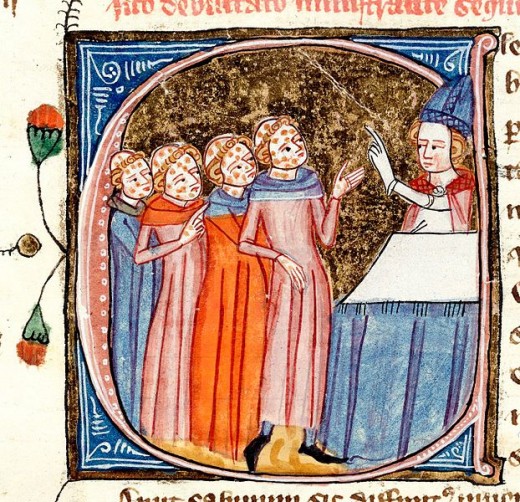
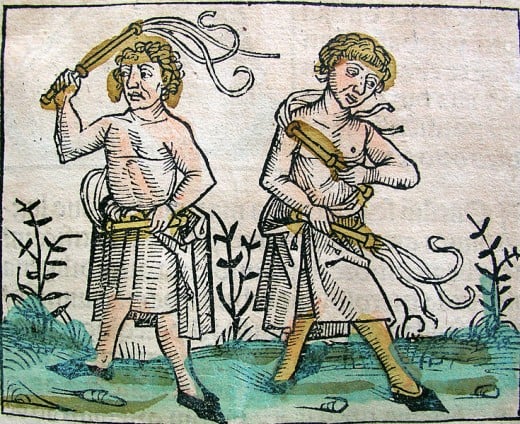
Disillusionment with the Church and the Rise of Religious Cults
During the plague, the papacy was based in Avignon, and many saw this as the church subordinating to the French monarchy. This was a controversial issue because of tensions between key power figures like the French and English Monarchies (including King Edward the III of England and King Philip the VI of France), and the Catholic Church.
Efforts to safeguard health through prayer, repentance, and the promise of curing plague victims by the clergy, proved ineffective. It is therefore understandable that a resentment and disillusionment towards the church started to build, leading to an increase in the popularity of religious cults. Most notably, the flagellant movement gained significant popularity; people travelled between towns, publicly whipping themselves and each other with chains and whips to atone for sins, hoping to appease a perceived vengeful God.
A Horrible Histories segment on the rise of the Flagellant movement during the Black Death.
It's in the Air: Miasma
Though it was agreed that the primary cause of the plague was due to the action of a vengeful God, theories as to the immediate causes of the plague varied considerably. The book of Revelation makes reference to seven angels pouring vials of poison into earth’s atmosphere during a time when earth is destroyed by war and famine. Unsurprisingly, then, a common theory as to a physical cause of the disease was Miasma; a corruption of the air thought to enter the body through the nose, mouth, or pores of the skin.
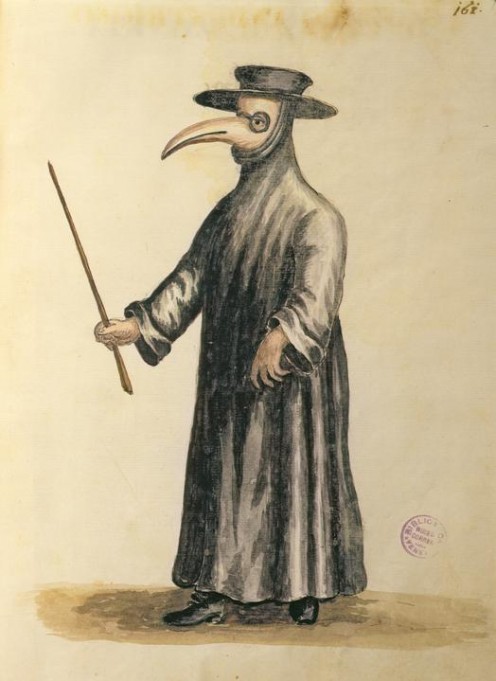
The famous image of doctors wearing striking plague masks actually belongs to a later outbreak of plague during the 16th century, and not to the Black Death in medieval times. Instead, if physicians were at hand, they simply visited the sick “with something odiferous under their nose” (Stefani, source), and urged people to avoid bad smells.
Many agreed that rotting corpses, excrement, and other unpleasant smelling things including slaughterhouses and warehouses involved in the tanning industry which produced strong scents, could infect the air. Stefani writes that people “fled to villas, others to villages in order to get a change of air” (source). Many preventatives therefore focused on ‘cleansing’ the air by constantly burning sweet-smelling wood and spices, and carrying around herbs.
Theories as to the initial cause of the Miasma often included suggestions that earthquakes and volcanic eruptions freed noxious vapours from the ground. One individual theorised that the immediate cause of the mortality was “a corrupt and poisonous earthly exhalation” (source); vented from an earthquake that occurred on St Paul’s day in 1347, along with others like it, that “infected the air” (source); and “killed people in various parts of the world” (source). Another prominent theory as to the cause of the corruption of the air was that of the conjunction of Saturn, Mars, and Jupiter in 1345. Integral in medieval medical practice was the impact of the earth’s position in regards to the planets and to the twelve signs of the zodiac, and in 1348, the Medical Faculty of the University of Paris released a report stating that “the distant and first cause of this pestilence was and is the configuration of the heavens” (source). They explain that “the conjunction of Mars and Jupiter causes a great pestilence in the air” (source), while the conjunction of Saturn and Jupiter contributed to the immensity of mortality and suffering caused.
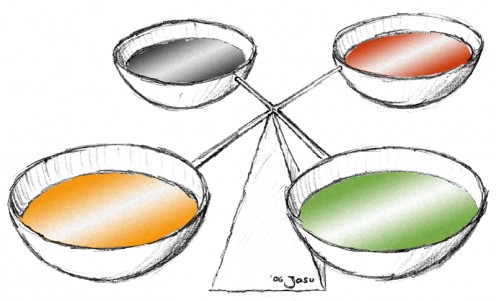
Medieval Physiology: Humorism
Individual effects of this cosmic alignment were commonly explained with references to a person’s ‘complexion’; an early theory of human physiology developed by Islamic and ancient Greek theorists Avicenno and Galen.
An individual was said to have a unique ‘complexion’; a mix of four ‘humours’ known as blood, phlegm, black bile and yellow bile, which were equated with the four elements that Earth was believed to be made of; air, water, earth and fire respectively. These humours could be influenced by changes in celestial bodies and illness was seen as an imbalance of these humours. It was believed that the corruption of the air likely disrupted this balance, which manifested in the symptoms of the Black Death. Some treatments therefore focused on readjusting this balance, such as through bloodletting and consumption of prescribed elixirs of ground metal and gems in order to purify blood, as well as taking purgatives to prevent a ‘build-up’ of the humours.
Reactions to the Black Death and the Tragic Extermination of Jews and Lepers
Reactions to the Black Death varied wildly amongst people; some attempted to repent for any moral wrongdoings in order to appease a vengeful god, some fled to other villages and cities, or even to isolation, following the belief that living temperately and avoiding all excesses was the best way to avoid contracting the disease. Conversely, some adopted a gluttonous lifestyle and frequented taverns and threw parties; wanting to enjoy the life they had while they had it. With the efforts of physicians and attempts by officials to safeguard health proving overwhelmingly ineffectual, it is unsurprising that people jumped at wild theories of the plague’s cause if a cure seemed at all attainable. Thus, in a time when so many things came under suspicion as having caused the plague, it is unsurprising that paranoia and desperate fear made the marginalised groups of society likewise come under suspicion of culpability.
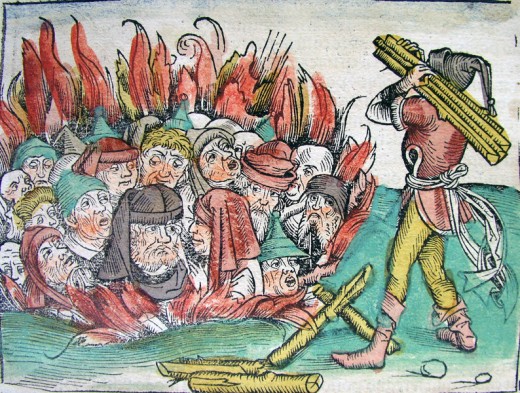
Rumours began to surface that the Jews had used Black magic and poisoned drinking wells and springs. It is important to understand that there was a pre-existing resentment for Jewish communities, due not only to religious xenophobia and hatred, but also because most money-lenders were Jewish (catholics found such actions immoral), and interestingly, Jewish individuals were considered property of the King directly. Thus, by attacking the Jews, people were able to attack an institution which there was growing dissatisfaction towards.
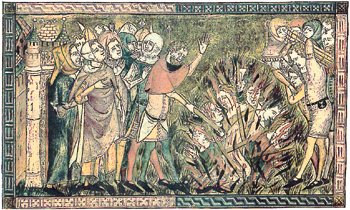
The conspiracy was supported by the (obviously forced) confessions of many Jews under torture, such as having “bred spiders and toads in pots and pans” (source), and that they “had themselves sprinkled poison or poisoned rivers” (source). This led to widespread persecution of Jewish people, most notably in Switzerland and Germany, and by 1351 the Jews had been violently massacred in at least 350 separate organised pogroms, decimating many Jewish communities. Another marginalised group, the lepers – or people with the disease leprosy – who were often seen as having an inner defect, were also heavily persecuted and were likewise exterminated throughout many regions.
What Was the Real Cause of the Black Death?
Our knowledge of the Black Death, of it's initial arrival in Europe, of its symptoms, effects, and the destruction it caused, is based on a collection of documents that historians have attempted to thread together to paint a cohesive picture of the event. This is difficult to do because it is possible that some documents have been forged, altered, or may simply be uninformed and wrong, therefore to place too great a trust in some of their content is unwise. Thus it is difficult to say with certainty what actually caused the black death.
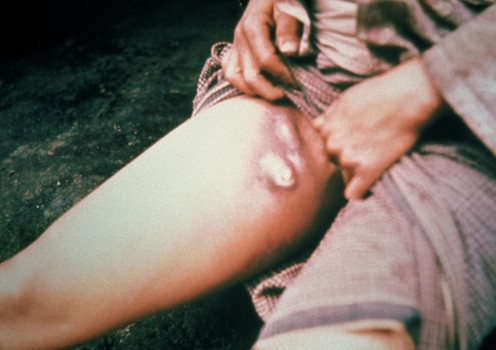
In Bocaccio's, 'The Decameron', he describes a first hand account of the symptoms of the disease; "In men and women alike it first betrayed itself by the emergence of certain tumours in the groin or armpits, some of which grew as large as a common apple, others as an egg" (source).
These 'tumours' are most likely buboes, caused by the swelling of the lymph glands, which happen to be situated in the neck, groin and armpits. This account of the plague is mirrored by many others, and the most common theory as to the cause of the Black Death is therefore bubonic plague, caused by infection from the bacteria Yersinia pestis, which usually results from the bite of an infected flea carried and spread by rats.
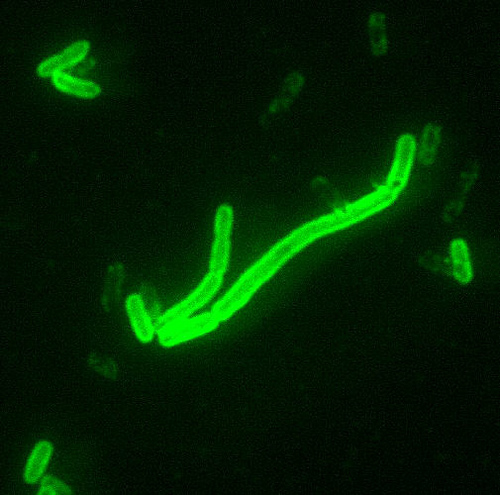

However, some accounts describe symptoms as involving respiratory issues and coughing up blood, and depict the rapid spread of the illness from exposure to the ill person alone. Such accounts seem to suggest the action of the Pneumonic plague, caused by the same bacterial agent, but which is infectious and can therefore be spread from person to person directly.
Both forms of the illness are deadly and accounts usually described death as following infection after only a few days.
Some are dissatisfied with either of these explanations; a common objection to the agent of plague being bubonic plague is the fact that the plague is documented as having spread rapidly and to new regions during winter. The objection is that, because this form of plague is dependent on being spread by rats (specifically, the fleas they carry), it is unlikely that the only known rats thought to have existed in Europe, tropical black rats, could possibly have traveled such vast distances so quickly during winter.
However, in 2010, scientists identified mass graves of plague victims and found DNA and protein signatures specific to the Yersinia pestis bacteria; strongly suggesting that it was the causative agent of the Black Death.
Today, infection can be treated with antibiotics, which should be prescribed as quickly as possible to prevent the onset of serious symptoms and to prevent death.
What Can We Learn From the Black Death?
Not only is the Black Death such a fascinating event in history because of the death it caused, but it is fascinating because it shows how unstable and chaotic society can become when such an unforgiving and suffocating blanket of fear drenches the air. It demonstrates the intensity to which humans are curious and insatiable when it comes to finding out the unknown, to the point where we often make dangerous, unfounded assumptions which can have devastating consequences.
Looking back on the events of the plague, it seems almost incomprehensible that such ludicrous causal theories were believed, and how such terrible atrocities were committed. However; the plague was so terrible, so unstoppable and so undiscriminating in its victims, that people could only watch as their families, friends, and villages fell. And when they turned to the Church for answers and hope, they were greeted only by the admittance that there was none; only apocalypse and doom. Their fear and panic was understandable.
I think an important lesson to take away from the devastation of the Black Plague is just how important it is to remain objective in the face of the unknown, and how dangerous xenophobia and dissemination of false information can be.
Such is the paramount importance of knowing and understanding history. The fear mongering and atrocities committed during the Black Plague, while somewhat understandable, are not excusable. Time after time do humans react to fear and ignorance by abandoning all logic and rationality and committing unconscionable acts in our panic. In this way, history is very cyclical; which is why it is so important to understand and learn from it. As the old adage goes; those who do not know their history are doomed to repeat it.

